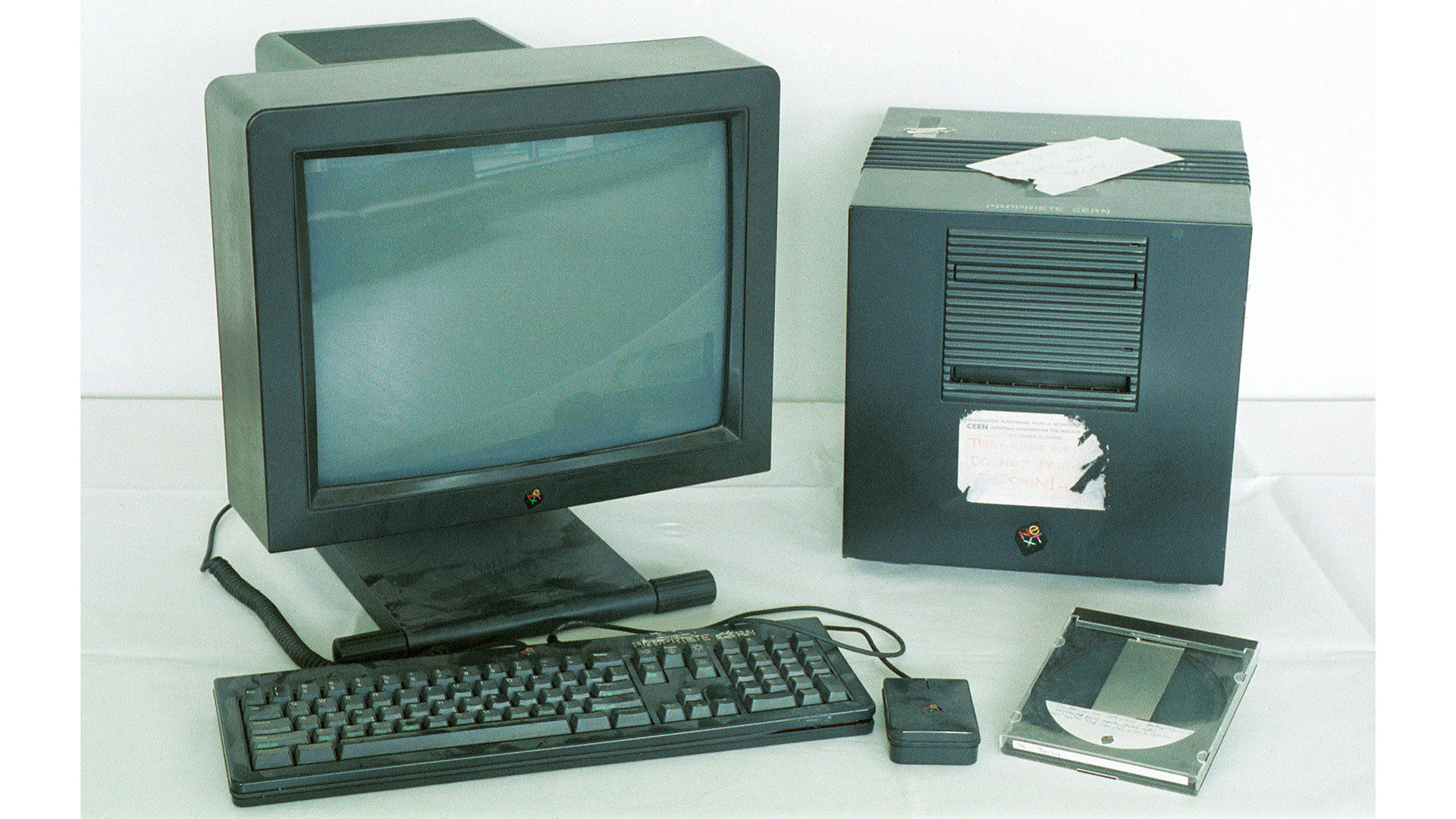Steve Jobs unveiled the NeXT Computer on this day in 1988 — 'The Cube' would be used to develop the WWW, Doom, and Quake
The stylish, DSP-accelerated computer came in a 1 x 1 x 1 foot die-cast magnesium case.

On this day in 1988, Steve Jobs unveiled the new apple of his eye, the NeXT Computer. While ‘The Cube’ wasn’t a commercial success, it shaped the future of personal computing in several ways.
An event at the Louise M. Davies Symphony Hall in San Francisco was chosen for the unveiling of The Cube. Contemporary reports suggest this theatrical setting was used because one of the crowd-pleasing demos of the NeXT Computer highlighted its built-in DSP, which can be a boon to computer audio processing, among other things. During the staged gala event, The Cube even ‘played a duet’ with a professional violinist.
This big NeXT reveal came just three years after the most famous Apple cofounder was ousted from the Cupertino company, in the wake of a power struggle with the board. Despite the relatively short gap, the NeXT Computer made some significant strides. However, typical for Jobs, NeXT didn’t shy away from premium pricing, and the $5,600 ticket on this will have dampened excitement. Inflation adjusted, The Cube would cost over $15,000 today…
"It's great to be back.”
So, we’ve already mentioned the built-in DSP, but what other silicon throbbed inside the 1ft x 1ft x 1ft die-cast magnesium chassis?
Like Apple Macs of the era, The Cube used a Motorola 680X0 main processor, the 68030 in this instance. It came with the 68882 floating-point coprocessor, and ran at 25 MHz. These computers shipped with 8MB of RAM as standard, expandable to 64MB via four available SIMM slots. For storage, the NeXT Computer came with a 256MB magneto-optical drive (an optical rewritable format), and there was an optional 330MB or 660MB hard disk to configure.
Supporting this interesting array of hardware was the NeXTSTEP operating system. This was “based on the Mach microkernel and BSD-derived Unix, with a proprietary GUI using a Display PostScript-based back end,” says a Wikipedia entry.
Of course, many already know that Jobs’ NeXT business was basically a side-quest of his Apple career, as he would return with Apple’s acquisition of NeXT in December 1996, and reclaim the Cupertino throne to become Apple’s de facto leader within a year.
Get Tom's Hardware's best news and in-depth reviews, straight to your inbox.
NeXT machines used for the development of the WWW and Doom
Beyond its artfully modern styling, advanced hardware for the era, and Unix-based OS, the NeXT Computer was famously used by Tim Berners-Lee to create the first web server and browser, laying the foundation for the Internet as we know it today. Moreover, NeXT Computers were used by id Software to develop Doom, Doom II, and Quake.
NeXT DNA in modern Apple
Apple’s turnaround, reinvigorated after the second coming of Jobs in the late 90s, was pivotal to its incredibly lucrative future. A lot of the company's upcoming glittering success leant on the DNA of The Cube.
What might be surprising is how much of the NeXTSTEP OS is still found in Mac OS X, which first released in 2001. So, even in 2025, there are still significant remnants of the NeXT system’s OS within macOS, iOS, iPadOS, watchOS, and tvOS.

Follow Tom's Hardware on Google News, or add us as a preferred source, to get our latest news, analysis, & reviews in your feeds.

Mark Tyson is a news editor at Tom's Hardware. He enjoys covering the full breadth of PC tech; from business and semiconductor design to products approaching the edge of reason.
-
ezst036 Computing history would be vastly different if the people running Be Inc. at the time had not been so greedy. Be should've taken the $125 mil.Reply
BeOS would've become MacOS and we would not have ever seen Steve Jobs at Apple again. Then NeXT Inc. would've developed the iPhone, etc etc etc. Jobs would've found a way.
Strange to think about. -
Findecanor Much nostalgia. I remember reading about it back in the day. I visited their booth at a trade show, and was presented with Doom running in a window multitasking on the desktop which blew people's minds at the time. They also showed off their development environment, for the OS's novel object-oriented frameworks.Reply
NeXT was a little bit cheeky with regards to the Macintosh. First, the machine was the opposite colour of the Macintosh's white. Next, where it mirrored the Mac's user interface on screen, it mirrored it: with the close button on the right instead of left, and the scroll bars on the left.
The OS was highly influential on the industry, both its internals and externals.
For example, the little AmigaOS got an object-oriented framework that worked like the Objective-C runtime in NextStep (but you could use any language), and a new 3D look.
Microsoft Windows got OLE and COM ... and with Windows 95 an obviously NeXTStep-inspired 3D look — with an additional window close button on the right. -
Sluggotg It certainly had some good features. It did not have a floppy drive. The Opto-mechanical drive was proprietary and you had to shut down the computer to remove the disk. I personally believe that hurt sales. It had great networking and that was how files were moved/stored. In 1988 that severely limited the market. How many people had their own network back then?Reply
They only sold 50,000 but they did have its own magazine. (I browsed through it at the book store when it came out). It had great specs but was very expensive. Ultimately it's OS was a complete success when Jobs had Apple buy it and modify it for use on the Mac. -
Puce Moose My school had a NeXT computer lab - I remember being impressed by the machines, and they had an asteroids-like game that I loved - very realistic looking asteroids. I remember the screens being black and white.Reply